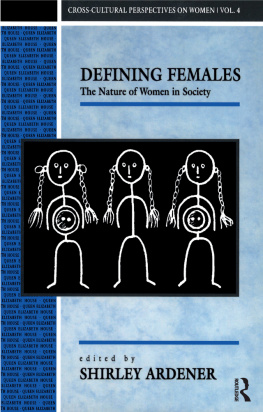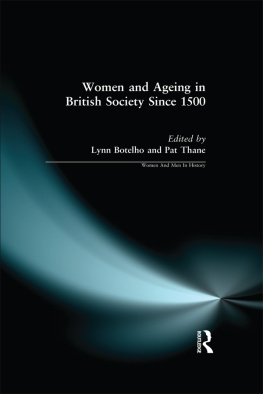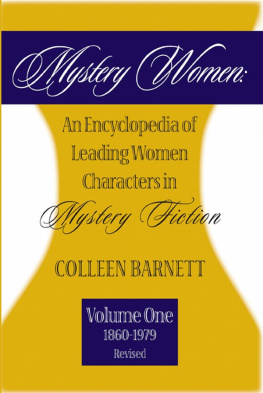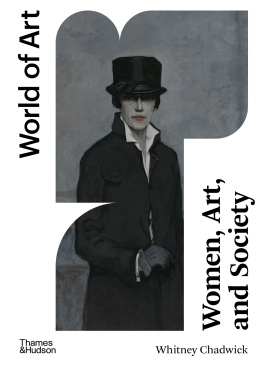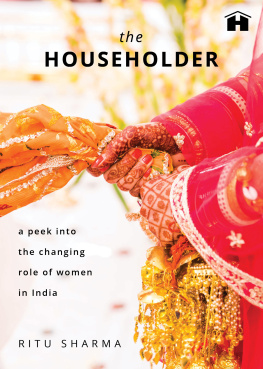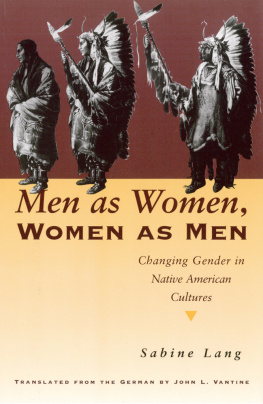Defining Females
CROSS-CULTURAL PERSPECTIVES ON WOMEN | VOLUME 4
Defining Females
The Nature of Women in Society
EDITED BY
ShirleyArdener
First published 1993 by Berg Publishers
Published 2020 by Routledge
2 Park Square, Milton Park, Abingdon, Oxon OX14 4RN
605 Third Avenue, New York, NY 10017
Routledge is an imprint of the Taylor & Francis Group, an informa business
Copyright Shirley Ardener 1993
All rights reserved. No part of this book may be reprinted or reproduced or utilised in any form or by any electronic, mechanical, or other means, now known or hereafter invented, including photocopying and recording, or in any information storage or retrieval system, without permission in writing from the publishers.
Notice:
Product or corporate names may be trademarks or registered trademarks, and are used only for identification and explanation without intent to infringe.
Library of Congress Cataloging-in-Publication Data
Defining females: the nature of women in society / edited by Shirley Ardener.
p. cm. (Cross-cultural perspectives on women)
Originally published: London: Croom Helm in association with the Oxford
University Women's Studies Committee, 1978, in series: Oxford women's
series.
Includes bibliographical references and index.
ISBN 0-85496-727-3 (pbk.)
1. WomenSocial conditions. I. Ardener, Shirley. II. Series.
HQ1121.D43 1992
305.42dc20 92-39823
CIP
British Library Cataloguing in Publication Data
A CIP catalogue record for this book is available from the
British Library
ISBN13: 978-0-8549-6727-8 (pbk)
Shirley Ardener
This book has already been issued twice under the Croom Helm imprint, the first time in 1978. It has been unobtainable for some time, and the new edition with Berg is designed to meet requests that it should once more be available. The papers were presented at the first seminar organised by the Oxford University Womens Studies Committee, of which three of the authors were then members. Its task was to examine certain basic assumptions relating to the definition of women. It seemed helpful to be reminded that we tend to think of the category women as some kind of universal. Yet we should not be allowed to forget that our own cultural model of women, and the adventures of the beings who realise that model, are very special examples from a wider category called women, which has many other possible realisations. Clearly an English model has no ultimate theoretical or moral primacy, although it may legitimately command our interest. It follows, of course, that any general conclusions about women that we may wish to draw from English historical, literary and other material, need to be viewed in the light of such awareness, and of experience in other parts of the world. Although we do not yet have the data or the techniques to do this adequately, even some hints as to the problems are likely to be useful. The papers that follow here provide us with new examples of data that deviate from those that deck our ideas of women, and remind us that a range of other possibilities is available. At the same time the analyses of other cultures might reveal to us aspects of our own, whose significance we have not noted before. The variety of personhoods that constitute even one woman are discussed further in Persons and Powers of Women in Diverse Cultures (Ardener 1992).
The first seven chapters here are substantially the same as in the first edition; text is inevitably a product of the date of its creation. To try to tamper with them seemed pointless, although a few minor changes have been made. This book, then, is a child of its time; the data given is, however, to some extent timeless, and the discussions have made their place in the discourse on gender, culture and biology. We felt, however, that it would be useful to include a new chapter, specially written, that would consider the book in light of some of the material and analyses that have come forth since Defining Females was first issued. We therefore invited Dr. Sharon Macdonald to contribute a new chapter here. One study in the original book is not included here: that on the female brain by Dr. Freda Newcombe and Dr. Graham Ratcliff. It was agreed that, if it were to be, this would require considerable up-dating, and both authors were heavily committed to other work. We commend to you their paper in the original edition of this book.
Notes
- Speaking of the social anthropologist returning from fieldwork, David Scobey notes that his task is not to show us what we are - which he can do mainly at the cost of being obvious - but to show us what we are not, to show us particular alternatives to ourselves (review in Journal of the Anthropological Society of Oxford, Vol. 14, No. 1,1978, p. 80).
ShirleyArdener
The Volume
The Topic
This book is concerned both with the nature of women in society, and with the nature of women in society. On the one hand it considers the facts of, or more precisely, societys identification of the inherent biological properties or natural endowments of women, and how these have been used by society. On the other it looks at the structural, or social position of women, and asks how the category women is defined, and is related to others in society. It suggests that perceptions of the nature of women affect the shape of the categories assigned to them, which in turn reflect back upon and reinforce or remould perceptions of the nature of women, in a continuing process.
The Chapters
The book starts immediately with our main concern: the semantics of For, as Kirsten Hastrup says below, biology and culture are mutually affecting spheres of reality.
Hastrups chapter shows us how the biological properties of women may be used as markers of social categories in a way that does not so often happen in the case of men. The penis is one outstanding male attribute, which has often been regarded as a symbol of power and authority. But compared to the case for men, the potential physiological changes in women are more various and more discrete. The physical boundaries of female virginity, for instance, can be more easily defined, and any particular case is, theoretically, easily open to proof or disproof. Societies have therefore found female virginity to be a useful symbol, one that can be made to carry a variety of connotations, of concern to persons of both sexes and all ages. Hastrup illustrates her argument here by examples from the Zulu and the Tewa Indians, showing at the same time that virginity can only be fully understood by reference to all the conceptual categories of the system of classification of which it is part.
Rene Hirschon points to another biological difference between males and females. The effect of sexual stimulation on a man is clearly observable, while that on a woman is not easily detected without secondary signalling. From this differing visibility, conclusions as to the different force of inherent sexual feelings of men and women, and their control, have sometimes been drawn. Such assumptions have given rise to complex social orderings. Hirschon takes the perceptions of a modem Greek community to illustrate her argument.
The conspicuousness of the biological role of the mother in the production of a new child is another fundamental difference between the sexes which has complicated repercussions in the social field. In their different ways Helen Callaway and Wendy James, as well as Rene Hirschon, show what some societies have made of this asymmetry. A few cultures give no social recognition to the physiological contribution of a father in Callaway usefully draws our attention to the fact, less often noticed, that not all societies equally recognise the creativity of the mother. James carefully examines the different ways that various societies have reflected the role of the mother in human generation in their ramifying systems of kin relationships.

